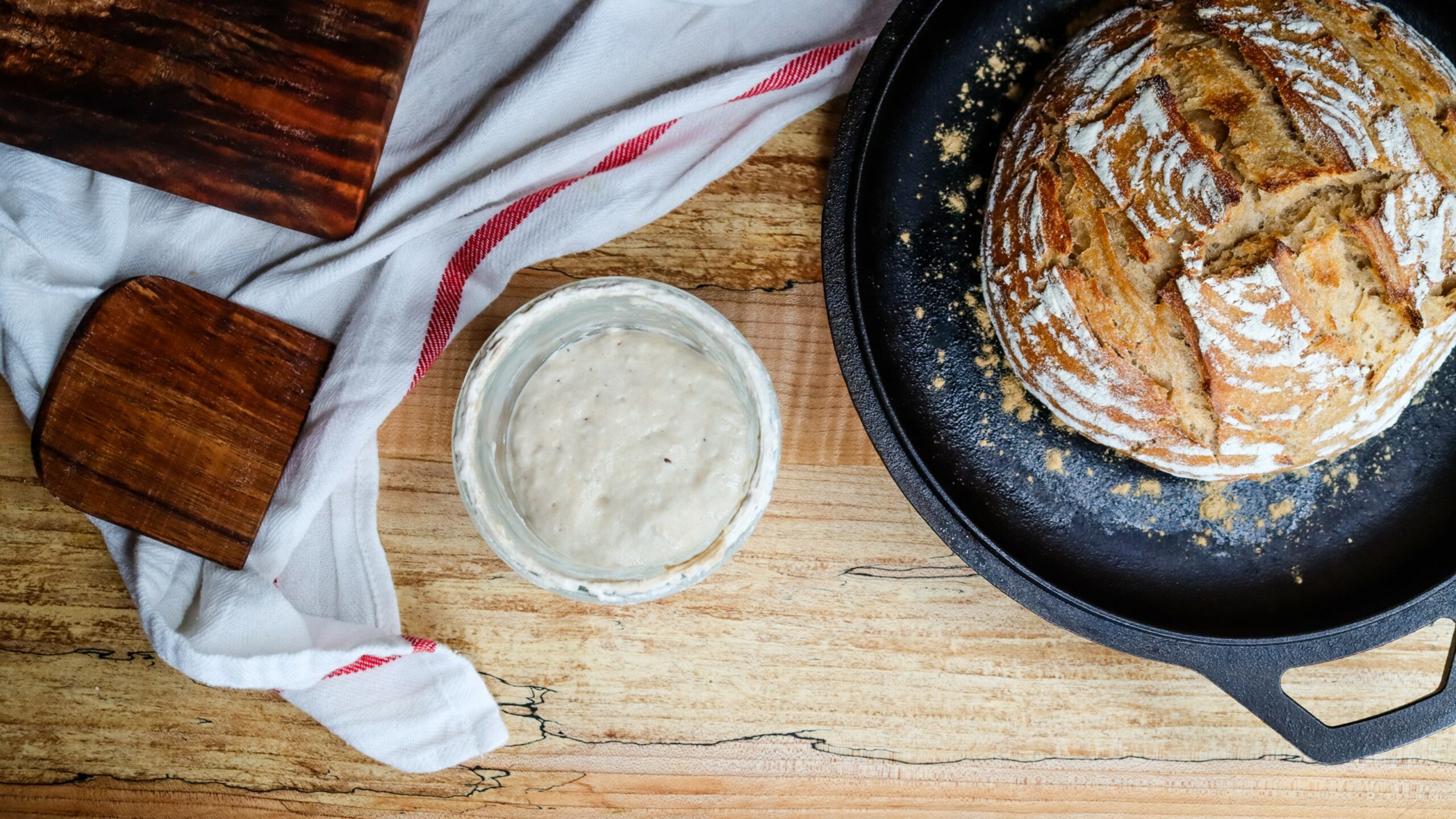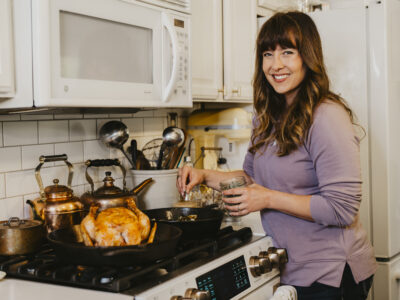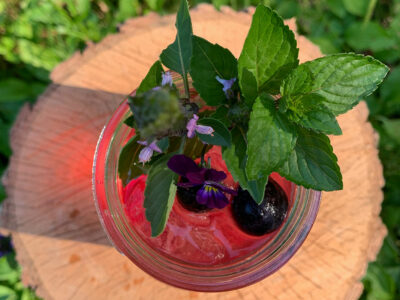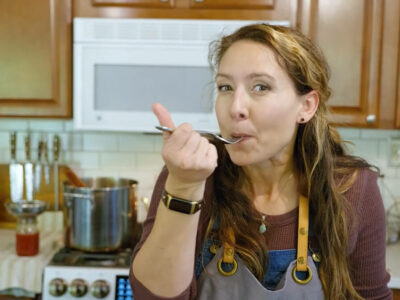If you’ve found your way to this blog post (and podcast episode), you’re probably thinking that sourdough baking is something you’d like to try. Hesitate no more, and let me assure you that baking with sourdough is 100% worth the effort to learn and implement into your daily life. Follow my sourdough baking tips to ensure success!
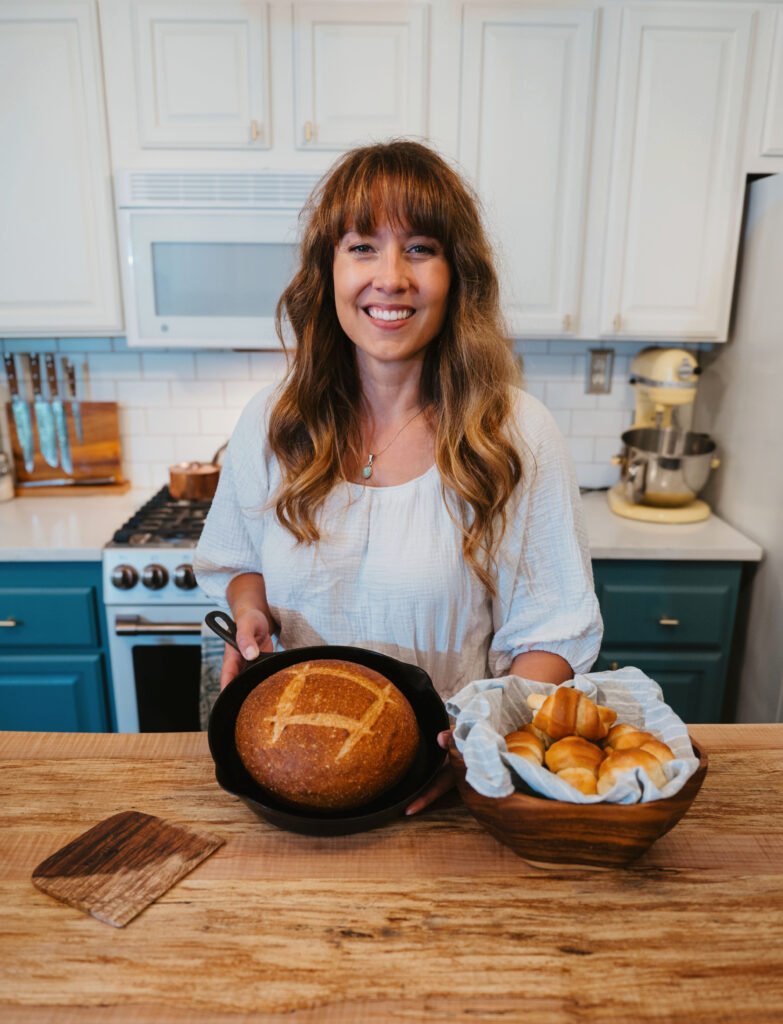
This is probably the best place for you to start! Listen to my podcast episode, then head on over to my blog post on how to make a sourdough starter from scratch.
From there, be sure to sign up for my upcoming FREE sourdough webinar, where I’m sharing nine easy tips for sourdough to bake like a pro at home.
Once you’re ready to go, I have some great posts on how to rehydrate dehydrated sourdough starter (something I recommend we all do, just in case our sourdough starter accidentally gets baked in the oven – ask me how I know!), and how to revive a neglected sourdough starter (we’ve all been there at one time or another!).
Before you know it, you’ll be baking up delicious loaves of my easy beginner sourdough sandwich bread, sourdough tortillas, and double chocolate sourdough loaf cake.
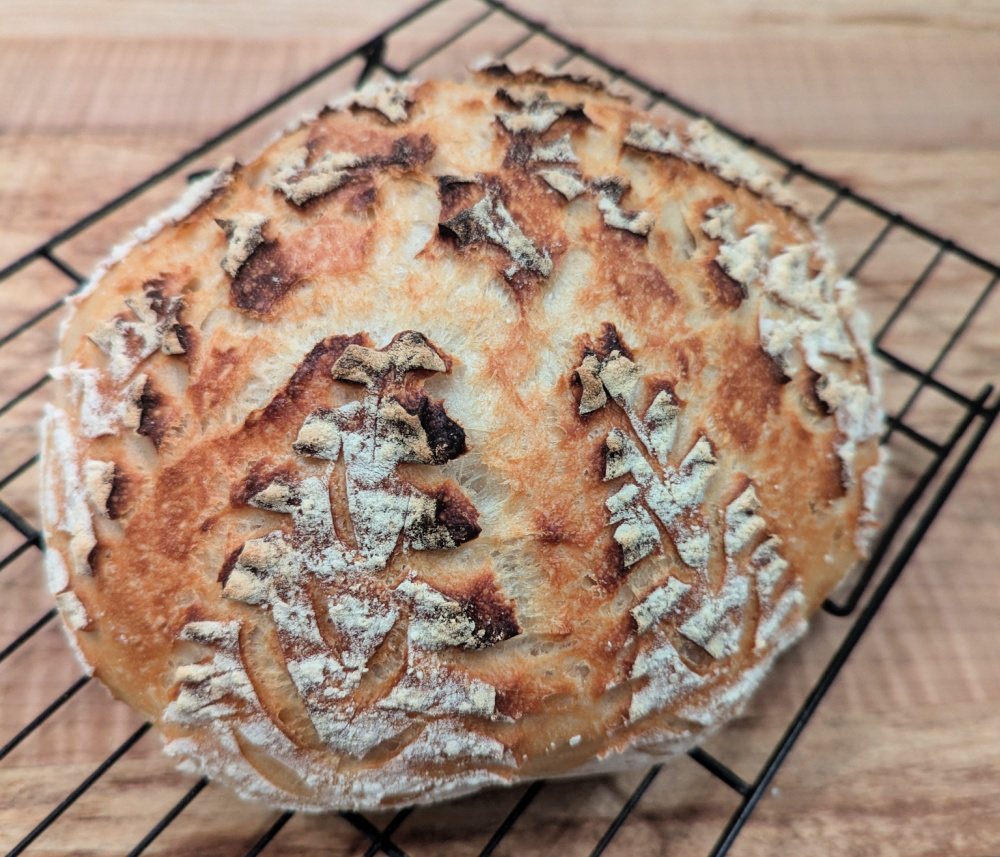
Why You’ll Love Sourdough Baking
One of the reasons sourdough wins out over commercial yeasts is that the fermentation that happens with the yeast and bacteria breaks down the starch in the flour. There are many benefits that come from this, such as:
- Digestibility – Sourdough bread’s long fermentation process is fantastic because it eases its digestibility. This is also why some people with gluten sensitivities (not allergies) can sometimes consume sourdough bread without issue. Pro Tip: When purchasing sourdough bread from the store, be sure to check the ingredients. There should only be flour, salt and water! If you see yeast, it’s not a true sourdough bread.
- Better Nutrients – Because the bread is easier to digest, our bodies are able to better absorb the nutrients from the flour when compared to regular yeast bread.
- Lower Glycemic Index – Since the starch (carbohydrate) portion of the flour has been pre-digested and consumed by the live organisms in the sourdough starter, the bread has a lower glycemic index.
- Flavor – Last but not least is the flavor of sourdough baked goods. There’s nothing like them! And don’t worry, if you’re not a fan of the super sour loaf, there are ways to maintain your sourdough starter to keep it from getting too sour.
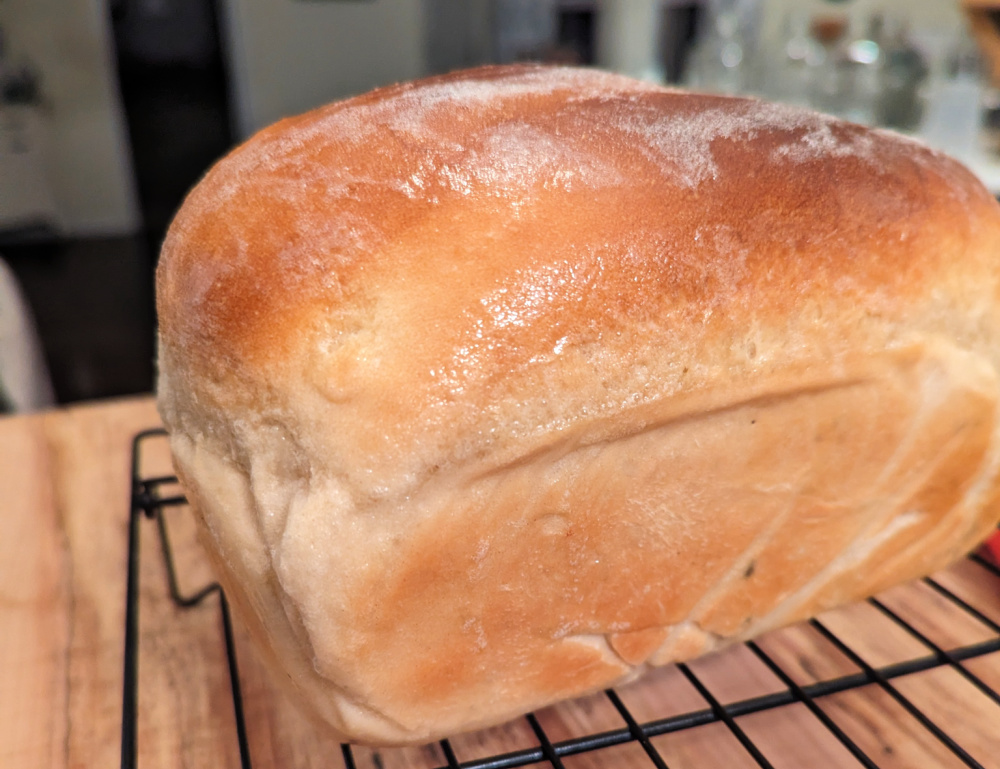
Things to Know BEFORE Baking With Sourdough
There are some marked differences between baking with yeast recipes and sourdough recipes. One of the biggest things to be aware of is the time and the commitment it takes for sourdough baking and maintenance.
The other thing you’ll want to learn is how to understand your sourdough starter’s behavior.
We’ll dive into all of these things below.
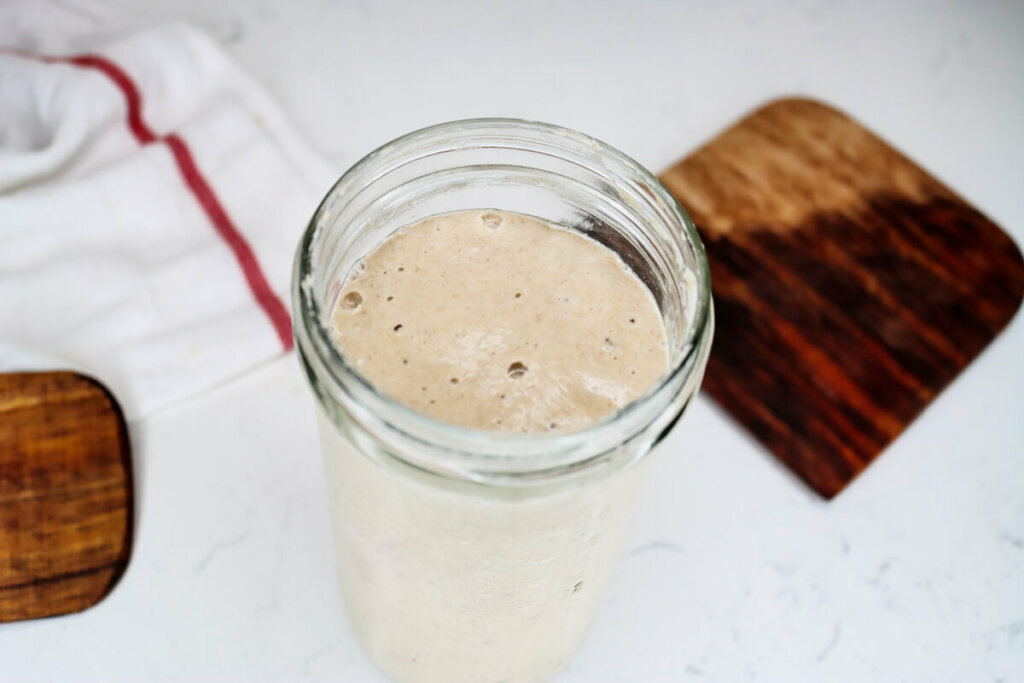
Feeding Schedule
When getting used to having a sourdough starter it’s a little bit like adding a new pet to the family. Your starter will need daily feedings (or twice daily when just getting started) and if you neglect it, it will suffer and potentially die.
My biggest tip for people just getting started is to put your sourdough starter in a place where you will see it every single day. For me, this is by my coffee pot. I know I’m going to have a cup of coffee every morning, so it’s easy to simply feed my starter while I wait for my coffee to brew.
To make it even easier, have a cute canister that you can set on the counter that has your flour in it. I know if I have to get out ten different items just to feed my starter, I’m much less likely to do it.
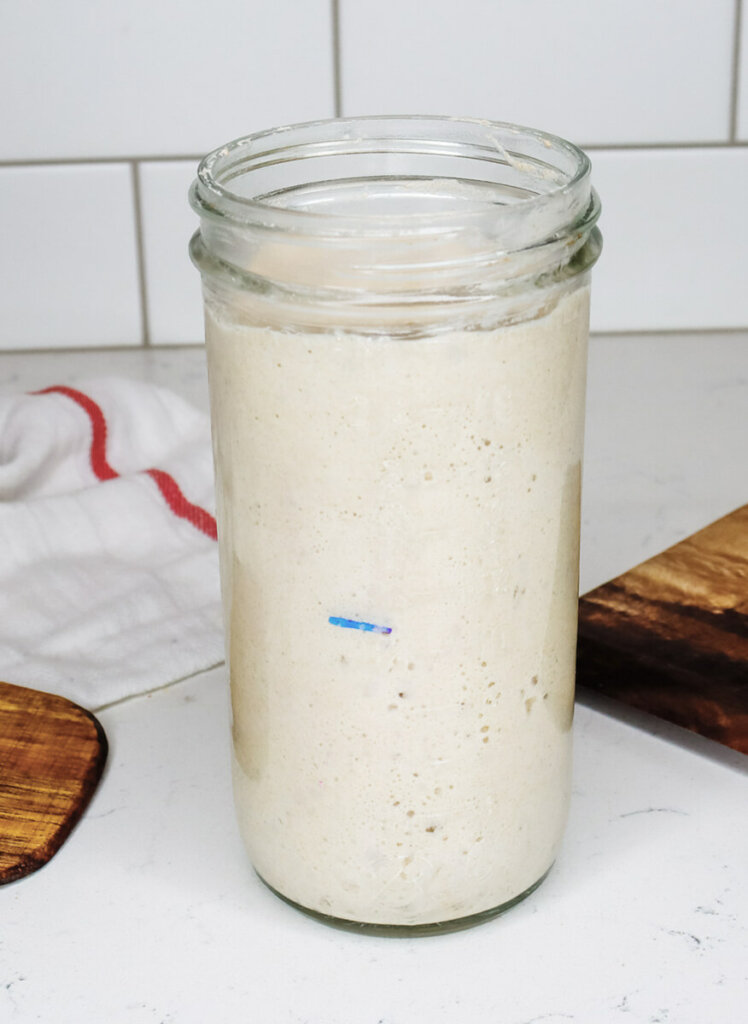
Understanding Sourdough Starter Behavior
Knowing how to tell if you have a happy and flourishing (or a sad and struggling) starter is important. These signs can tell you if you’re on the right track or whether you need to make some adjustments to your feeding schedule or flour choice.
I’ll go into this more below, but using different flours can make your starter act differently. All-purpose flours make your starter very happy and bubbly, usually doubling in size within 2-4 hours of feeding (for an established starter). While fresh ground flours and ancient grains will make a sourdough starter bubbly, but it’s not quite as bubbly and active.
Temperature will also effect your starter’s behavior. If your house tends to be extremely cold, your starter may be a bit more sluggish. While if your house is on the warmer side (higher than 75°F or above) your starter may be extremely active and rise much more quickly.
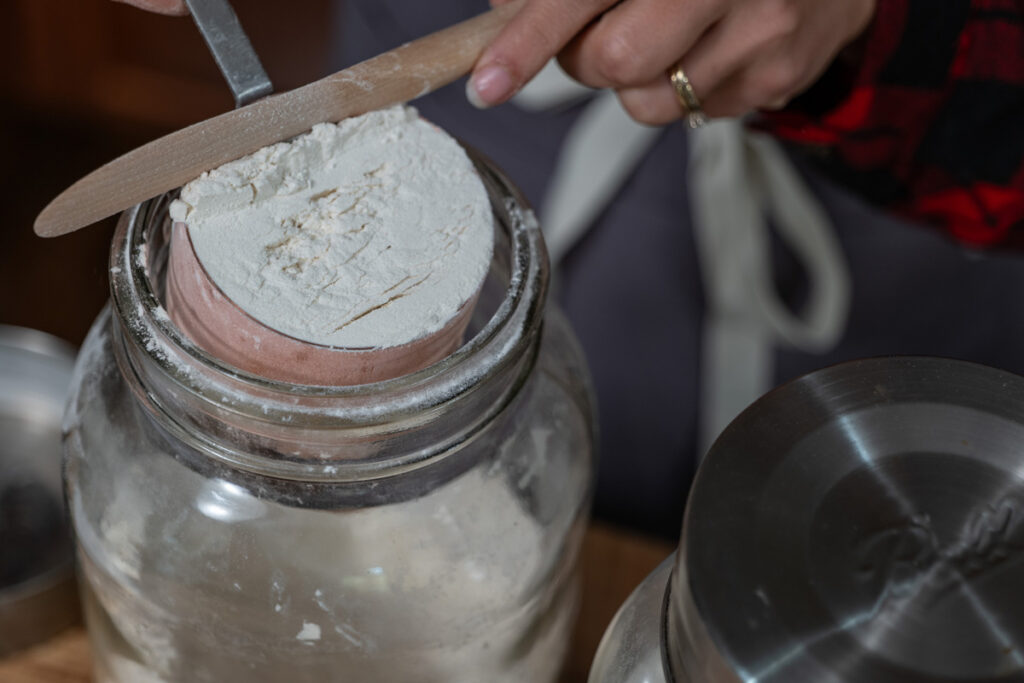
Hydration
Hydration levels are another thing to discuss when it comes to sourdough starter and sourdough baking. This is where many people can get confused and may even want to throw in the towel.
Let me assure you that it’s much easier than many people make it sound!
- 100% hydration for a sourdough starter just means that you’re feeding the sourdough starter equal parts flour, water and sourdough starter (by weight). For instance, each time you feed your starter, you’d take 30g sourdough starter and feed it with 30g water and 30g flour. This will make a nice thick, yet pourable sourdough starter. If you’re looking for something thicker, you’d increase the flour. If you’re looking for something thinner, you’d increase the water. How much you do so for each of those things will determine the percentage of hydration.
- 100% hydration for a loaf of sourdough bread is going to be a very wet dough. I don’t recommend people start off with a recipe that calls for 100% hydration because it can be difficult to work with. Furthermore, you won’t be able to stretch and fold it and get that nice smooth surface (like in the bread loaf pictured below).
- Ingredients Matter – When baking loaves of bread, what you add into the dough will effect the crumb and texture of the bread. Adding in items with higher fat content (think melted butter, milk, etc.) will give the bread a softer, smaller crumb, ideal for sandwich bread. While straight sourdough starter, flour and water will yield that classic crispy crust and chewy inside with lots of big holes for a typical artisan loaf.
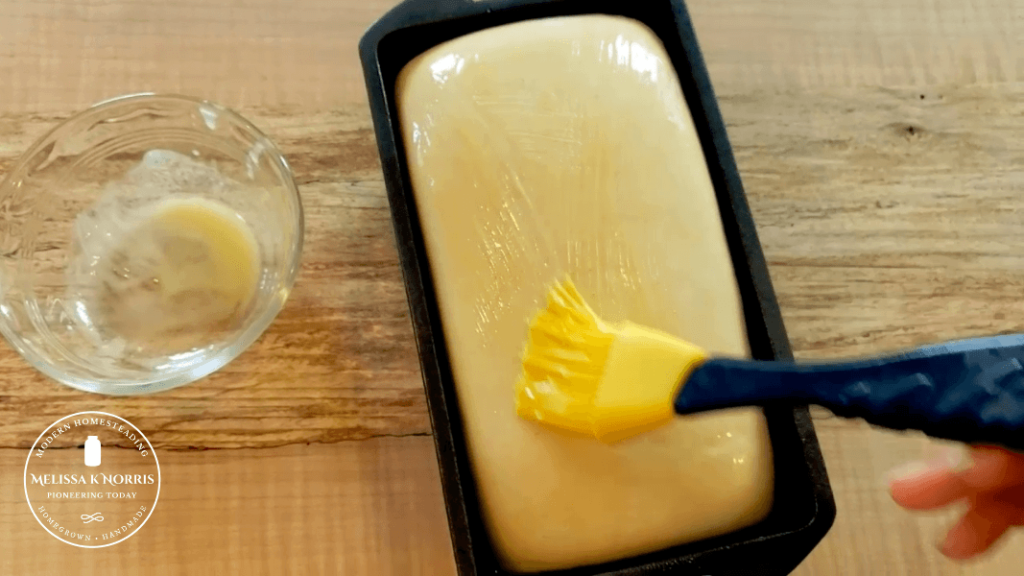
Sourdough Recipes Take Longer
In general, sourdough recipes will take a lot longer. Though the majority of the time is hands off (the hands-on time is about equivalent to other recipes), there is quite a bit more hands-off time. This can be a struggle for some to work into their daily routines, especially if you have a job outside the home.
Once you have an active sourdough starter, there are plenty of recipes you can make with sourdough discard (see the list of recipes below), but a true sourdough loaf of bread can take upwards of 12 hours.
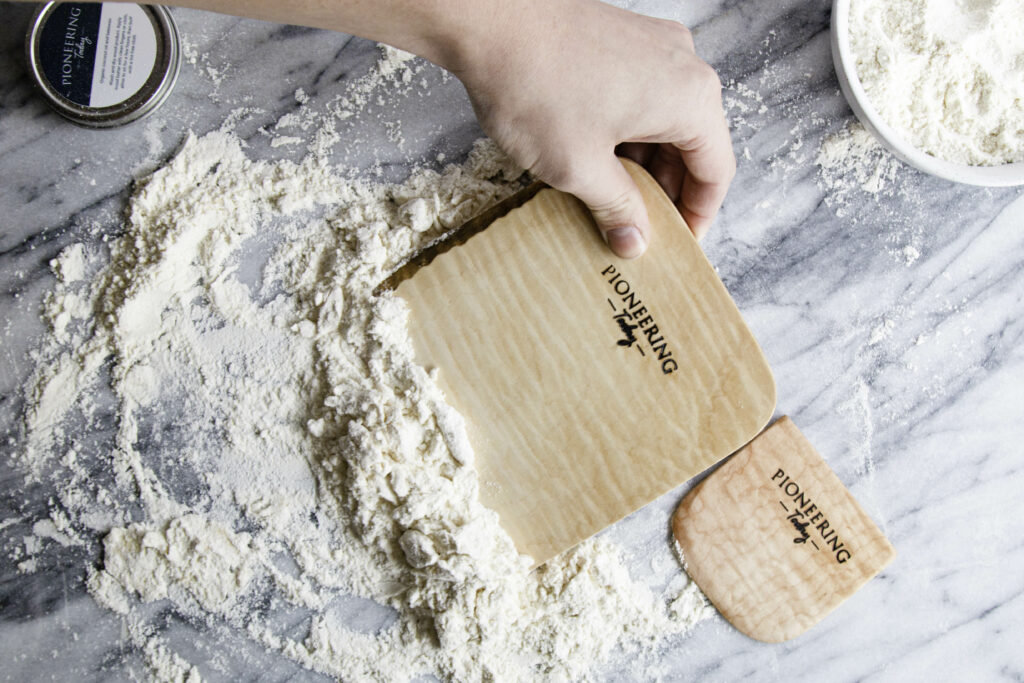
Flour Makes a Difference
I talk a lot about the best flour to use in my post on how to make sourdough starter, but I’ll recap that info below. In my sourdough class, I teach you how to make a sourdough starter from 4 different types of grains: all-purpose, ancient grain einkorn, fresh-ground hard white wheat and gluten-free brown rice flour.
- Hard White Wheat – This is my go-to for feeding my sourdough starter because, most of the time, I’m baking bread that I want to have a higher gluten and protein content (so I get a nice tall rise). Looking for a soft and sliceable sourdough sandwich bread recipe? Give my best beginner sourdough sandwich bread recipe a try!
- Spelt – This flour is great for making pancakes, waffles, cakes and other pastries. It has a lower gluten and protein content, which creates soft and fluffy baked goods.
- Soft White Wheat – This is another option for light and fluffy baked goods such as pancakes, waffles and cakes.
- Pastry Whole Wheat – This also makes delicious baked goods and pastries due to the low protein content. All-purpose flour generally contains about 10-12% protein, whereas pastry flour contains about 8-9%.
- Ancient Grain Einkorn – A great option if you’re looking for flours that are easier to digest. I generally save my einkorn flour for baked goods that aren’t sourdough, but it also works wonderfully for sourdough. If you’re not used to baking with ancient grains, I recommend checking out this post health and baking tips for Einkorn flour.
- Gluten-Free Brown Rice – This is a great gluten-free option. Many people like to create gluten-free blends, but I find having a single flour sourdough starter is easiest and works just as well for gluten-free baking. You can make your recipe with additional gf flour added for better consistency, but the starter itself can just be a single flour. You may enjoy this post on successful gluten-free baking that actually tastes good.
For my recommendations on where to find hard white wheat and other grains, check out this post on where to buy grains in bulk.
And don’t forget to join my sourdough baking class! It’s FREE and you won’t want to miss even more tips for sourdough baking success.
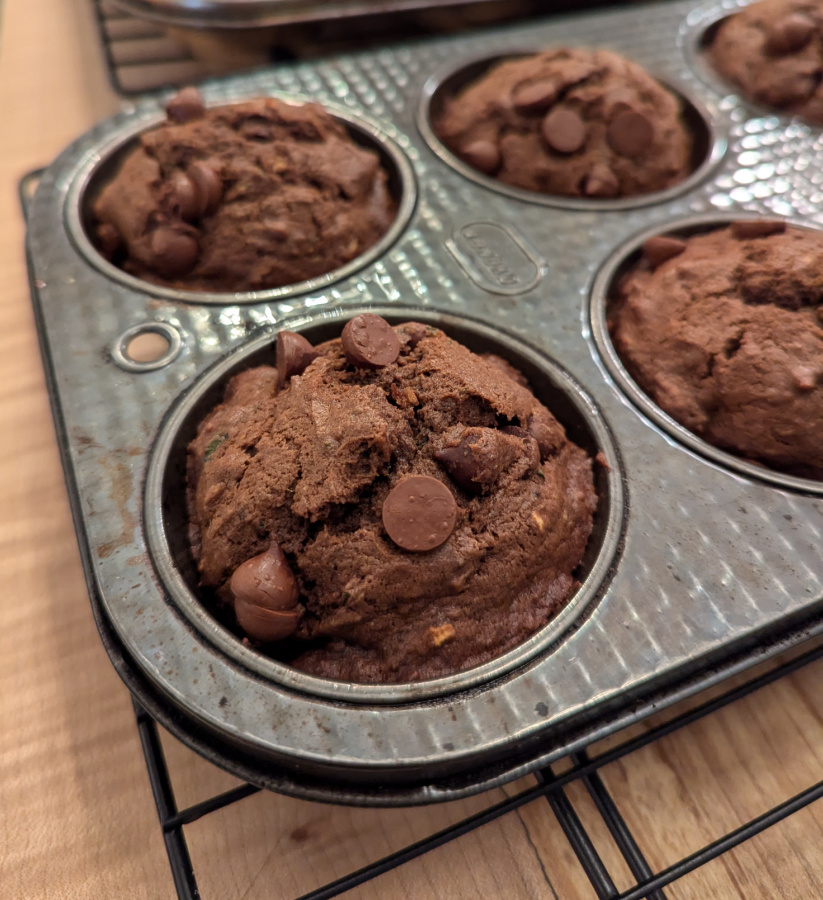
More Posts You May Enjoy
- Sourdough Chocolate Bread From Scratch
- Best Beginner Sourdough Sandwich Bread No Yeast
- Rehydrating Sourdough Starter
- 8 Tips for Strengthening Your Immune System Now
- Fermentation for Health Benefits & Food Preservation
- Fermented Dairy – Why You Should Be Doing This Now
- How to Make Yogurt at Home
- Kahm Yeast (What, Why & Does it Ruin a Ferment)
